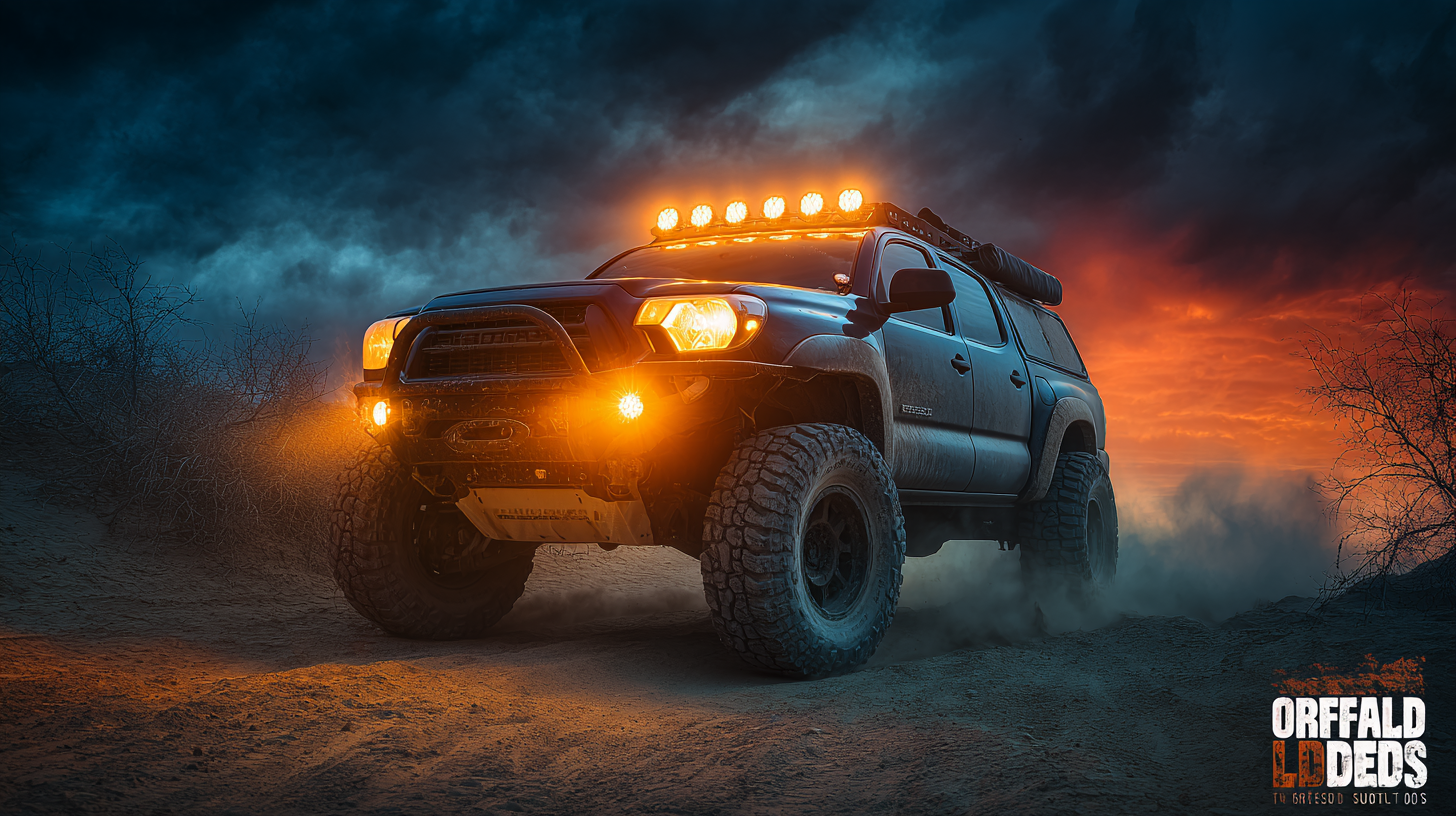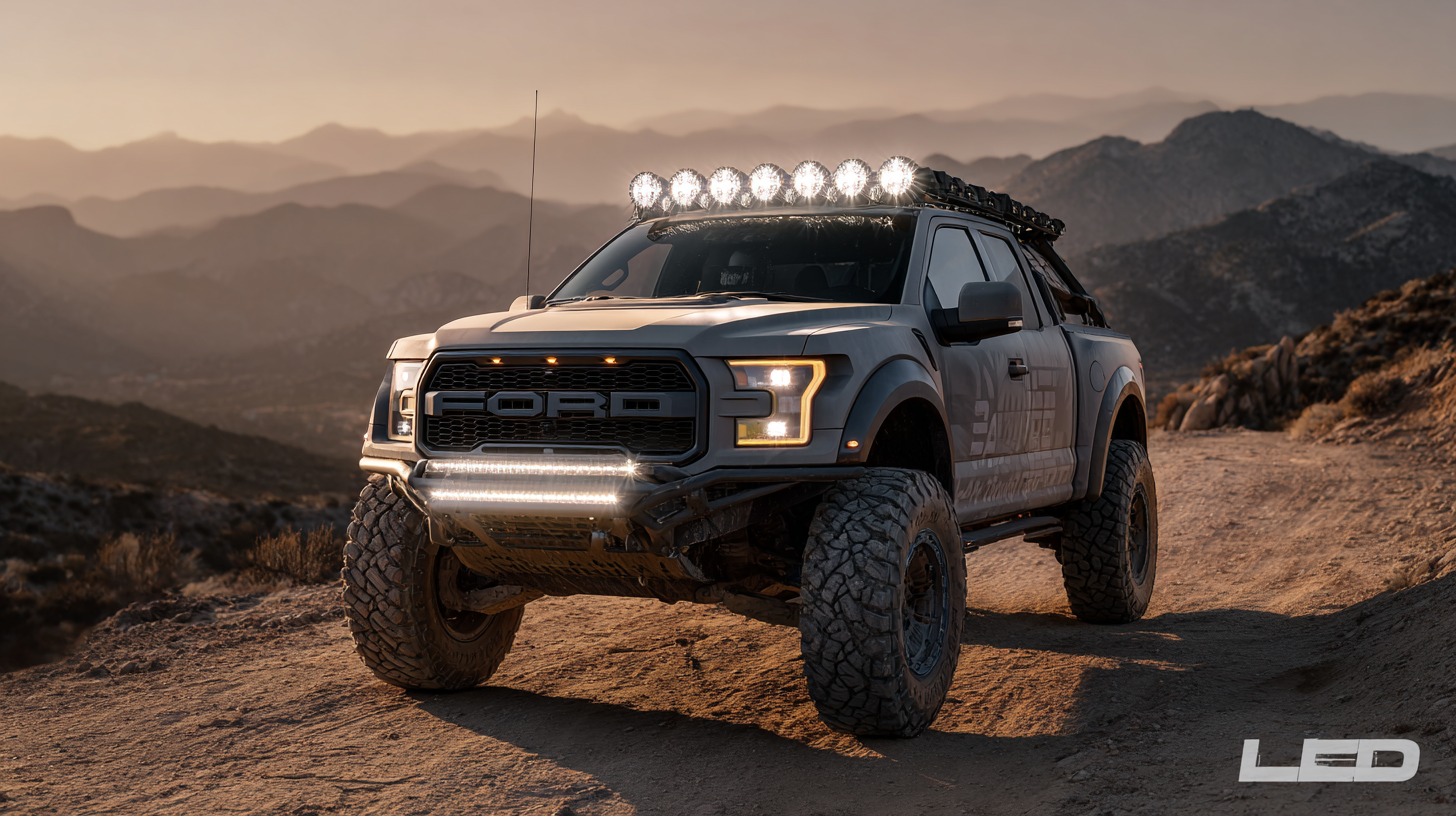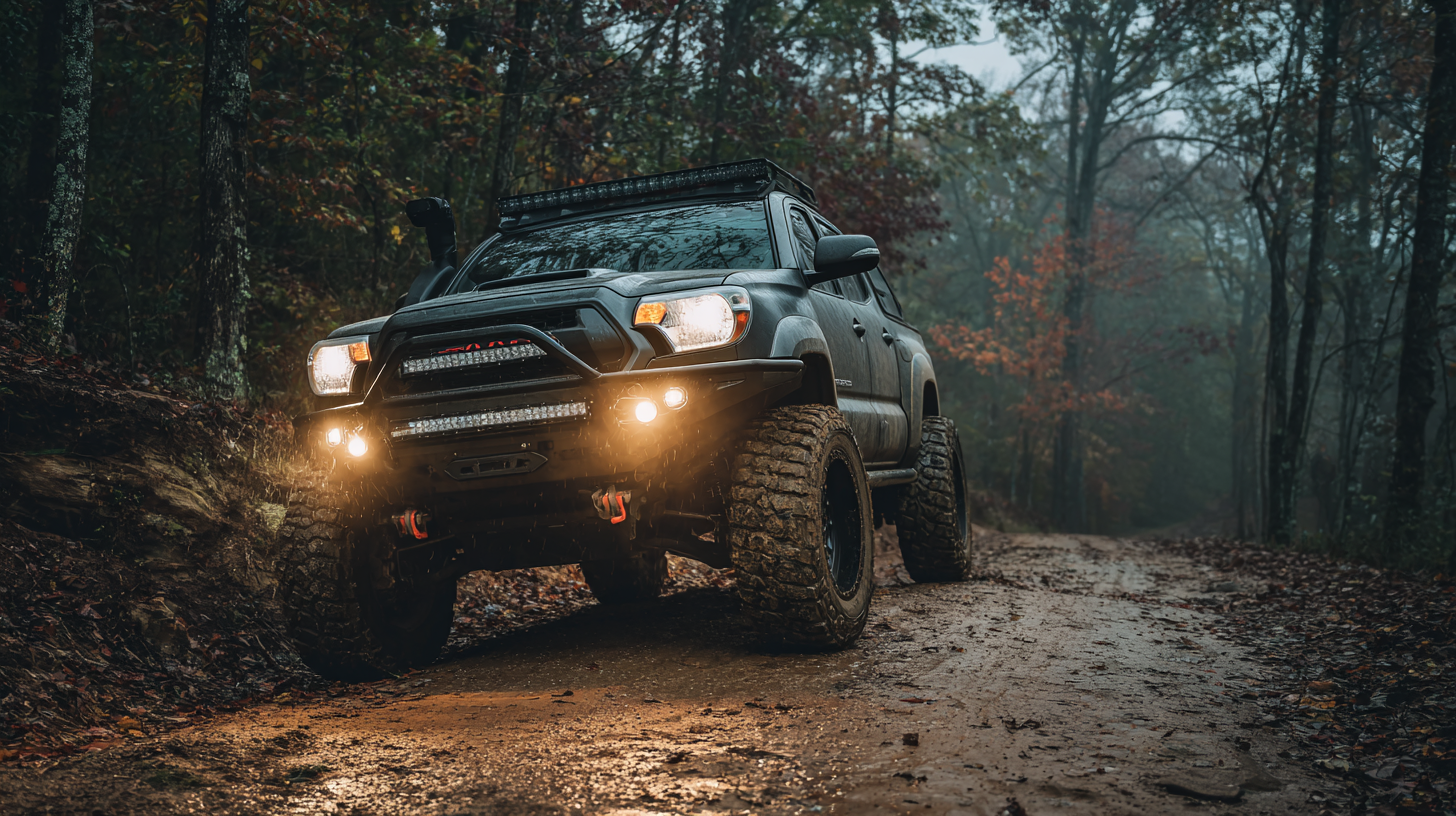In the realm of off-roading, having the right equipment can significantly enhance your outdoor experience, and among these, Offroad LED Lights play a pivotal role. According to a recent industry report by Grand View Research, the global LED lighting market is projected to reach $110.7 billion by 2027, emphasizing the growing popularity and reliance on LED technology for off-road applications. These lights not only provide superior illumination but also offer durability and efficiency unmatched by traditional lighting solutions. With varying specifications and features, choosing the right Offroad LED Lights can be overwhelming for enthusiasts. Factors like brightness measured in lumens, beam patterns, and energy consumption are just a few of the critical aspects that will be covered in this blog. Understanding these industry standards will empower you to make an informed decision tailored to your specific needs, ensuring safe and enjoyable adventures in the great outdoors.

When selecting off-road LED lights, several key features can significantly impact your overall experience. Firstly, brightness is paramount, usually measured in lumens. A higher lumen count ensures better visibility in rugged terrains, making it easier to navigate dark trails. It's also essential to consider the beam pattern; spot beams provide focused light for longer distances, while flood beams illuminate a wider area, ideal for close-range visibility. Choosing the right combination will depend on your specific off-roading needs.
Durability is another crucial factor. Off-road conditions can be harsh, so look for lights that boast high IP ratings, indicating their resistance to dust and water. Additionally, materials such as aluminum for the casing can help withstand impacts and temperature fluctuations. Lastly, ease of installation and compatibility with your vehicle are vital; selecting lights that fit seamlessly with your setup can save time and enhance functionality. By focusing on these key features, you can ensure that you choose off-road LED lights that meet your adventure's demands.
When it comes to offroad LED lights, understanding different types of configurations is key to meeting your lighting needs. There are several popular configurations, including spot, flood, and combo lights.
 Spot lights emit a concentrated beam, perfect for long-distance visibility, making them ideal for navigating through rugged terrain at nighttime. Studies show that spot lights can produce a beam as far as 600 feet, significantly enhancing your sight in adverse conditions (Offroad Lighting Report, 2022
Spot lights emit a concentrated beam, perfect for long-distance visibility, making them ideal for navigating through rugged terrain at nighttime. Studies show that spot lights can produce a beam as far as 600 feet, significantly enhancing your sight in adverse conditions (Offroad Lighting Report, 2022
On the other hand, flood lights provide a wide, dispersed light output, illuminating a larger area around your vehicle. This is particularly beneficial for low-speed activities and obstacles that require immediate attention. According to the ANSI/IES RP-8-14 standards, effective flood lights can enhance peripheral visibility by up to 75%, making them indispensable for recreational offroaders. A combo configuration offers the best of both worlds, blending spot and flood capabilities for versatile lighting performance. Choosing the right configuration depends on your specific offroad activities, vehicle dynamics, and personal preferences.
When choosing off-road LED lights, understanding the industry standards and regulations is crucial. The Society of Automotive Engineers (SAE) has set various standards, such as SAE J581, which specifies the performance and quality requirements for auxiliary lighting devices. This standard ensures that off-road lights provide adequate illumination while minimizing glare to oncoming drivers, enhancing safety in rugged terrains. Compliance with such standards not only ensures durability but also confirms that the lights are engineered to meet rigorous testing protocols.
Additionally, the American National Standards Institute (ANSI) outlines guidelines for the light output and color temperature of outdoor lighting, which can significantly affect visibility and clarity during night-time driving. Reports show that LED lights with a color temperature between 5000K to 6000K offer optimal performance in off-road conditions by providing a bright, white light that closely mimics daylight. This allows for better contrast and visibility in challenging environments, helping drivers navigate obstacles more effectively. As a result, opting for off-road LED lights that adhere to these industry standards can significantly enhance both safety and performance on your off-road adventures.
| Feature | Description | Industry Standards | Considerations |
|---|---|---|---|
| Brightness (Lumens) | Indicates the amount of light output; necessary for visibility in offroad conditions. | ANSI/IES RP-16 | Choose brightness based on terrain and distance. |
| Color Temperature (Kelvin) | Refers to the color of the light; affects visibility and perception. | CIE 15:2004 | Select temperature based on desired visibility and conditions (cool or warm light). |
| Beam Pattern | The distribution of light; affects how far and wide the light covers. | SAE J581 | Determine the best pattern for your driving conditions (flood vs. spot). |
| Water Resistance (IP Rating) | Indicates protection against dust and water; essential for durability. | IEC 60529 | Choose higher ratings for extreme conditions. |
| Power Consumption (Watts) | Amount of energy used; impacts battery life in offroad vehicles. | Energy Star Certification | Balance brightness and battery efficiency for longer use. |
When it comes to selecting the right off-road LED lights, understanding brightness and beam patterns is crucial. Brightness is often measured in lumens, with higher lumen counts equating to greater illumination. However, it’s essential to not just focus on lumens alone; the quality of the light produced matters just as much. A light with high lumens but poor beam pattern might fail to provide the necessary visibility in challenging terrains. Look for lights that offer a good balance, ensuring that they illuminate not only the area directly in front of you but also the sides, enhancing your awareness of obstacles and potential hazards.
Beam patterns can significantly affect how well you see when off-roading. Common beam patterns include spot, flood, and combo beams. Spot beams provide a narrow, long-distance illumination that’s ideal for high-speed driving, while flood beams offer a wide spread of light for low-speed maneuvering in tight spaces. Combo beams blend both types, allowing for versatile usage. When evaluating lights, consider what environments you’ll be navigating. A light that excels in one area may compromise in another, so choosing the right beam pattern based on your specific needs will ensure a safer and more enjoyable off-roading experience.
When selecting off-road LED lights, many enthusiasts make common mistakes that can hinder their driving experience. One of the most prevalent errors is prioritizing aesthetics over functionality. While bright colors and stylish designs may catch the eye, it’s crucial to consider factors such as brightness output, beam pattern, and durability. Focusing solely on looks can result in poor visibility and performance during critical off-road situations.

Another frequent misstep is neglecting to check the product specifications and compatibility with their vehicle. Many users purchase lights without verifying their power requirements or mounting options. This oversight can lead to installation challenges or, worse, electrical issues that damage the vehicle. Ensuring that the lights are not only compatible but also appropriate for the intended type of off-roading, whether it be trails, rocks, or mud, is essential for maximizing safety and effectiveness on the road less traveled.
